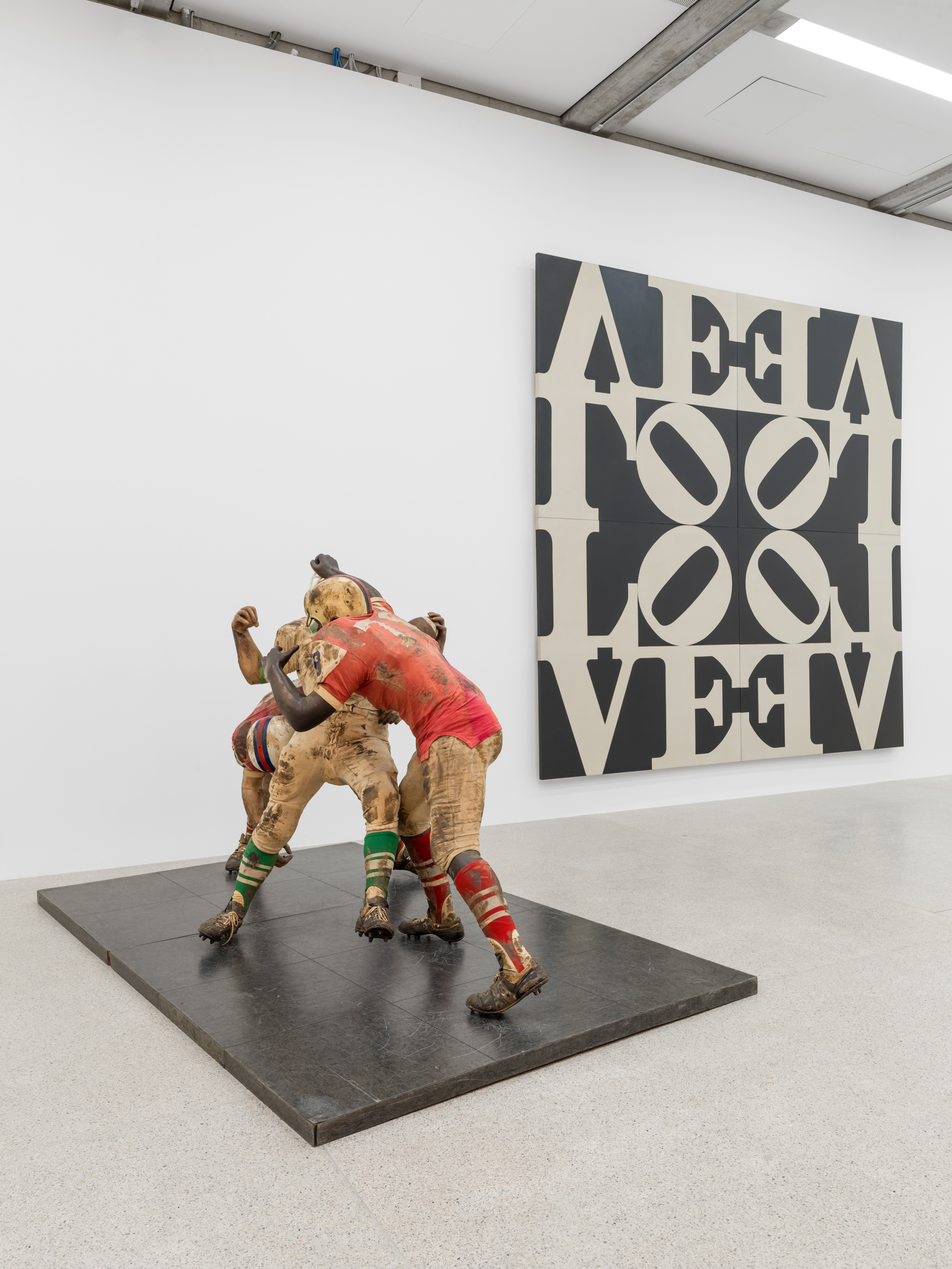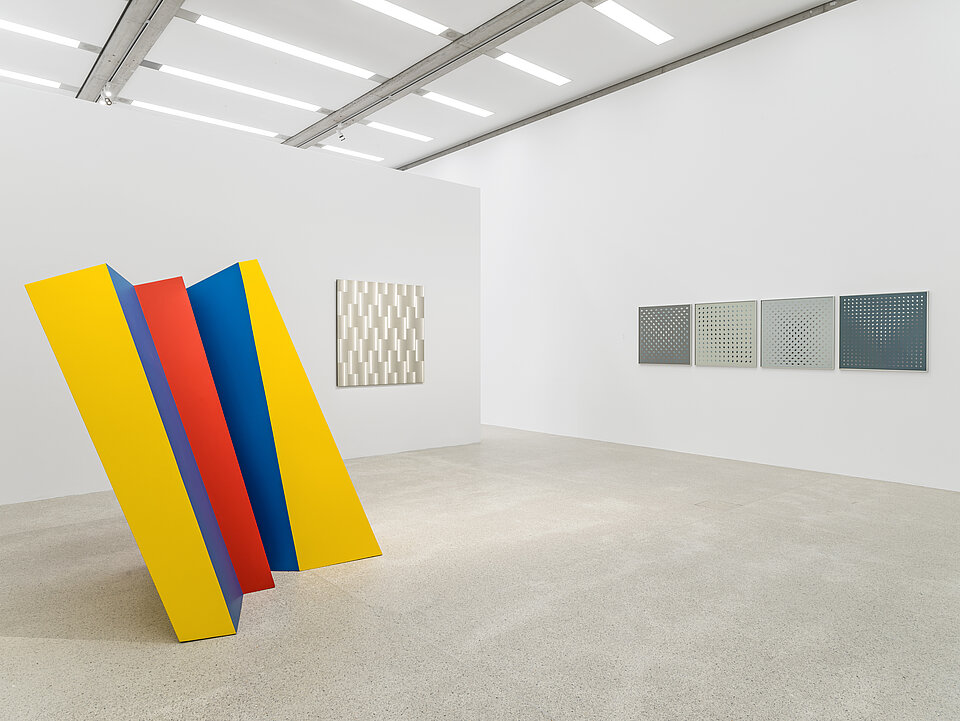With her meticulously executed, sometimes large-format, geometric black-and-white paintings, British artist Bridget Riley became one of the central figures in a strand of nineteen-sixties abstract art that focused on the viewer’s visual perception of the image. Soon known as “optical art” or Op Art, it relied on a number of visual effects to evoke flickering impressions, optical illusions or a sense of movement in viewers. Shimmering lines, curved waveforms or basic geometric shapes that, slowly but insistently, are systematically modulated, often erasing the distinction between foreground and background, dissolve the image’s material basis for viewers in Riley’s works. A further variation, if you will, of the “turn away from the image” that plays such a vital role in twentieth-century art history.
The Nineteen Greys portfolio was created in 1968. Riley’s work was presented in an unusually wide range of settings that year; she was one of only five women artists at documenta 4 in Kassel and shortly beforehand was awarded the International Prize for Painting at the Biennale di Venezia. A turning point also emerged in her practice during that period. In 1967, Riley gradually started to move away from her previous strict restriction to stark contracts between black and white, increasingly executing her rigorous patterns and sequences in color. Initially Riley felt her way forward cautiously in this newfound exploration of the painterly category of color, deploying shades and gradations of gray. Like Deny, a formally almost identical series from the previous year, Nineteen Greys is grounded in a pattern of oval dots, set in a regular arrangement on four square pictorial surfaces in various monochromatic hues of gray. Gradually the ovals are rotated and the color values grow successively lighter or darker. An illusion of spatial depth is created in the viewer’s perception, specific shapes composed of the dots emerge, and the image even begins to look as if it is moving.

